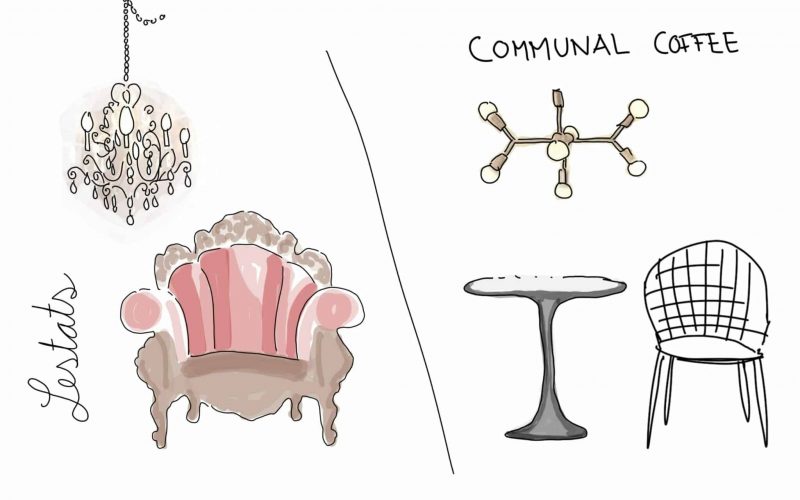Last October I sat in silence for ten days. It was the hardest experience of my life. Although, I have to admit that the food was incredible. Recently I looked up recipes online from the Vipassana retreat I attended almost exactly one year ago. The special Vipassana chefs, aka friendly volunteers, cook with a variety of spices and I think this must be a reason for the out-of-this-world experience in the dining hall. The decision to sit in deep meditation for ten days wasn’t just spurred by eating delicious food, however. Even though meditating almost non-stop was the most difficult I have ever done, it was also the most transformative experience I can imagine.
So what is this Vipassana thing I am rambling on about and why in the world would anyone inflict that kind of torture, um excuse me, voluntary discomfort on themselves?
Vipassana, which means “to see things as they really are”, is one of India’s most ancient techniques of meditation. It was taught in India more than 2500 years ago as a universal remedy for universal ills (Vipassana Meditation, n.d.). Hart describes the technique as “a systematic process of mental training and ethical conduct in which sustained self-observation leads to increased awareness, self-control, and inner balance” (Hart, 1987).
The technique of Vipassana Meditation is taught at a ten-day residential course during which participants learn the method and practice with deep focus to experience the results. The course is free of charge, which includes food and accommodation. The center relies on volunteers and on donations from people who completed a course and wish for others to experience the benefits of Vipassana meditation (Vipassana Meditation, n.d.). Vipassana centers exist throughout the world and the process is as easy as submitting an application online, although spots tend to fill up fast.
Vipassana isn’t limited to an exclusive group of people. Even prisoners benefit from the use of Vipassana Over the last 10 years, the technique of Vipassana has been very successful in reducing the rate of recidivism within prison populations where it has been regularly used (Vipassana Meditation for Correctional Facilities, n.d.).
A study by King County North Rehabilitation Facility (NRF) revealed that inmates repeated criminal activity less after completing a Vipassana course, compared to inmates who did not practice Vipassana. The study consisted of a two-year criminal history pre-program review and a two-year recidivism post-program review (Murphy, 2002). After three months of Vipassana practice, participants reported lower drug abuse than those in the control group, as seen in Figure 1.
Figure 1
Self-Reported Drug Abuse Severity
Note. Participants completing a three month Vipassana course report less drug abuse than those in the Treatment As Usual (TAU) control group (Parks, et al., 2003).
In a research study, school-teachers meditated at least twenty-five minutes per day over an eight-week training program and experienced significant reductions in depression, chronic anxiety and negative emotion. The benefits from the eight-week training program included feelings of patience, empathy, affection, compassion and more restful sleep. Participants reported the positive emotions as still being present even five months after the end of the training (Wallace, 2009). Hormone levels improved and the stress hormone cortisol lessened in members of the study.
Meditation also helps with feelings of anger as seen in the Donaldson Meditation Treatment Study (2002). A group of 53 males reported that they experienced less acute and long-term anger after meditating. They were better able to control the outward expression of angry feelings, shown in Table 1.
Table 1
State-Trait Anger Expression Inventory
Note. Treatment results were significant for changes in anger expression and control. (Donaldson Meditation Treatment Study, 2002)
Meditation training is associated with lower right amygdala reactivity to emotional pictures, as shown in Figure 2. The impact of long- and short-term mindfulness meditation training on the amygdala response to emotional pictures in a healthy, non-clinical population of adults was measured using blood-oxygen level dependent functional magnetic resonance imaging. Participants reported feeling less reactive to distressing images and thoughts (Kral, et al., 2018).
Figure 2
Impact of Meditation on Lower Right Amygdala Reactivity
Note. Long-term meditation training is associated with lower right amygdala reactivity to emotional pictures. (Kral, et al., 2018).
When I arrived at the Vipassana center in the desert close to Joshua Tree, California, I didn’t know what was awaiting me. I gave up my phone and any form of writing utensils, paper and books, which was part of the requirements. After reading and signing a lengthy contract specifying several times that I was not to leave the course before the very end, I took a deep breath in and hoped for the best. Had I just agreed to sentence myself to prison for over a week? It certainly felt like it and I started to second guess my choice.
I decided to focus on the fact that if others before me completed the Vipassana course, I might have a chance as well. In the end, I did survive and emerged from the depths of the meditation hall after ten days feeling refreshed, renewed and more creative.
I recommend everyone who wishes to experience a deeper connection to themselves and the world around them attend a Vipassana retreat. From my personal experience I can attest, the conscious search within the soul and the quieting of the mind leads to beautiful insight and clarity with a side effect of self-acceptance and love for all beings. Try it yourself. Do you accept the challenge?
References
Donaldson Meditation Treatment Study (2002). Vipassana Meditation Courses For Correction Facilities. https://prison.dhamma.org/en/research/.
Kral, T., Schuyler, B. S., Mumford, J. A., Rosenkranz, M. A., Lutz, A., & Davidson, R. J. (2018). Impact of short- and long-term mindfulness meditation training on amygdala reactivity to emotional stimuli. NeuroImage, 181, 301–313. https://doi.org/10.1016/j.neuroimage.2018.07.013
Parks, G. A., Marlatt, G. A, Bowen, S. W., Dillworth, T. M., Witkiewitz, K., Larimer, M., Blume, A.,
Simpson, T. L., Lonczak, H., MacPherson, L. M., Murphy, D., & Meijer, L. (2003). The University of Washington Vipassana meditation research project at the north rehabilitation facility. American Jails Magazine, July/August 2003.
Vipassana Meditation. (n.d.) Vipassana Meditation. https://www.dhamma.org/en-US/about/vipassana.
Vipassana Meditation for Correctional Facilities (n.d.). Vipassana Meditation for Correctional Facilities. https://www.dhamma.org/en-US/about/vipassana.
Wallace, B. A. (2009). Mind in the balance: Meditation in science, buddhism, and christianity. Columbia University Press.









